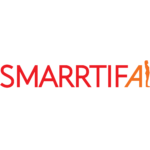“Ghiblification” of images using OpenAI’s latest image generation tool. This feature enables
users to transform photographs, memes, and other visuals into the distinctive style
reminiscent of Studio Ghibli, the renowned Japanese animation studio co-founded by Hayao
Miyazaki. While many have embraced this technological marvel, it has also ignited a
complex debate surrounding creativity, copyright, and the ethical implications of artificial
intelligence (AI) in the arts.

The Allure of Ghibli-Style AI Art
Studio Ghibli has captivated audiences worldwide with its hand-drawn animation,
whimsical storytelling, and richly detailed worlds in films like “My Neighbor Totoro,”
“Spirited Away,” and “Howl’s Moving Castle.” The prospect of recreating personal images or
popular memes in this beloved style has proven irresistible to many. Users have flooded
social media platforms with AI-generated Ghibli-style images, showcasing everything from
pets to iconic internet memes reimagined through the lens of Miyazaki’s artistry.
For instance, Janu Lingeswaran, an entrepreneur from Germany, shared his delight after
using the tool to transform a photo of his cat into a Ghibli-esque illustration. “I really fell in
love with the result,” Lingeswaran remarked, considering printing and displaying the image
in his home.
Ethical and Copyright Concerns
Despite the enthusiasm, the trend has raised significant ethical and legal questions. Central
to the controversy is the issue of copyright infringement. AI models like OpenAI’s image
generator are trained on vast datasets, which may include copyrighted works without
explicit permission from the original creators. This practice has led to concerns that AI-
generated art could undermine the rights and livelihoods of human artists.
Legal experts have highlighted the challenges in addressing these concerns. While specific
works are protected by copyright, mimicking a visual style generally isn’t. This legal gray
area complicates potential actions by studios like Ghibli against AI platforms.

Miyazaki’s Stance on AI in Art
Hayao Miyazaki, the visionary behind Studio Ghibli, has been a vocal critic of AI-generated
art. In a 2016 meeting, upon being shown an AI animation demo, Miyazaki expressed his
disdain, stating, “I am utterly disgusted. If you really want to make creepy stuff you can go
ahead and do it. I would never wish to incorporate this technology into my work at all.” He
further described the use of AI in art as “an insult to life itself.”
This perspective has resonated with many artists and fans who view the Ghibli-style AI
trend as contradictory to the principles and values that Miyazaki and his studio embody.
Community and Celebrity Reactions
The response from the artistic community has been mixed. While some celebrate the
democratization of art through AI tools, others fear the erosion of human creativity and the
potential exploitation of artists’ work without consent or compensation.
Zelda Williams, daughter of the late comedian Robin Williams, criticized the trend,
highlighting the environmental impact of AI and referencing Miyazaki’s opposition. She
remarked that relying on machines for artistic pursuits cheapens human effort and
creativity.

Technological Strain and OpenAI’s Response
The overwhelming popularity of the Ghibli-style image generation has also posed technical
challenges. OpenAI’s CEO, Sam Altman, noted that the company’s GPUs were “melting” due
to the high demand, leading to the temporary introduction of rate limits on the feature.
Free-tier users were restricted to generating three images per day as the company worked
on improving efficiency.
Legal Implications and the Future of AI-Generated Art
The legal landscape surrounding AI-generated art remains murky. While specific works are
protected by copyright, the replication of an artistic style is not easily litigated. This
ambiguity leaves artists and studios with limited recourse against AI platforms that emulate
their distinctive aesthetics. As AI technology continues to evolve, there is a growing call for
clearer regulations and protections to balance innovation with the rights of creators.
The Debate on Creativity and Originality
The rise of AI-generated art has sparked a broader debate about the nature of creativity and
originality. Critics argue that AI tools, by replicating existing styles, lack the depth and
emotional resonance that human artists bring to their work. They contend that true artistry
involves personal experiences, emotions, and a unique perspective that machines cannot
replicate.
On the other hand, proponents of AI-generated art suggest that these tools can serve as a
source of inspiration and a means to democratize art creation. They argue that AI can assist
artists in exploring new styles and techniques, pushing the boundaries of traditional art
forms.

The Role of AI in the Art Market
The integration of AI into the art market raises questions about the value and authenticity
of AI-generated pieces. Collectors and galleries are grappling with how to assess and price
works created with the assistance of AI. Additionally, the potential for mass production of
art through AI tools could impact the scarcity and exclusivity that often contribute to the
value of traditional artworks.
Educational Implications
The advent of AI in art also has implications for art education. Educators are faced with the
challenge of incorporating AI tools into curricula while emphasizing the importance of
foundational artistic skills and critical thinking. Balancing the use of technology with the
cultivation of individual creativity is becoming an increasingly pertinent topic in art
education circles.
Conclusion
The “Ghiblification” trend exemplifies the double-edged sword of AI in the creative realm.
While it offers exciting new avenues for artistic expression and engagement, it also raises
profound ethical and legal questions that society must grapple with. As technology
advances, the art world must navigate these challenges to ensure that innovation and
respect for human creativity go hand in hand.



